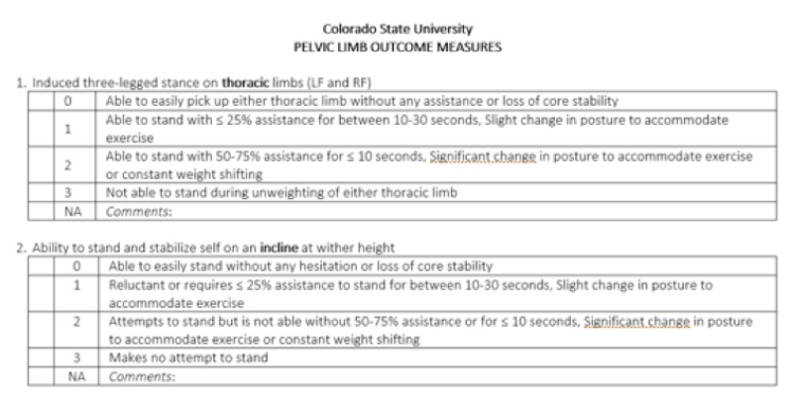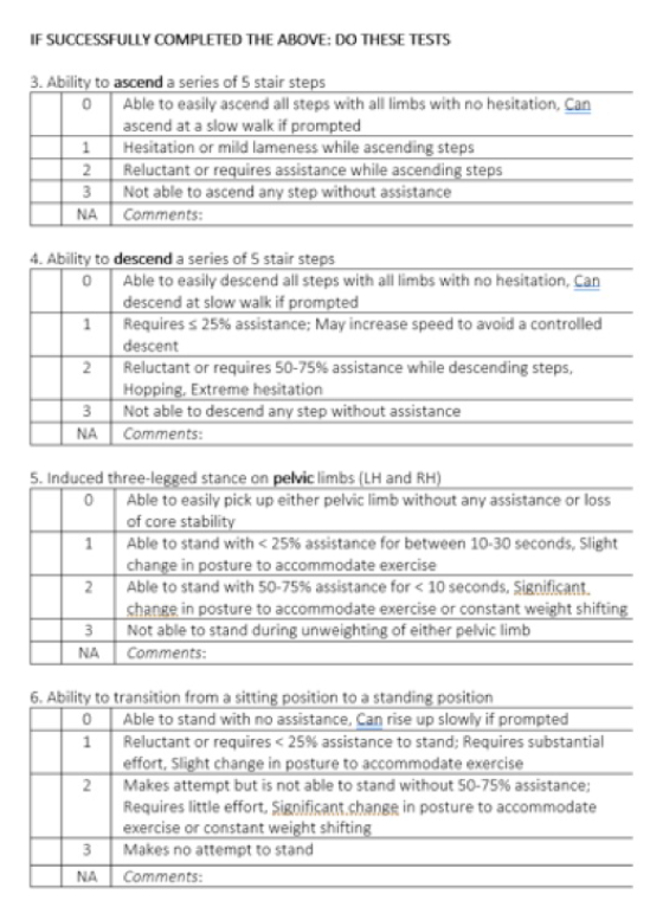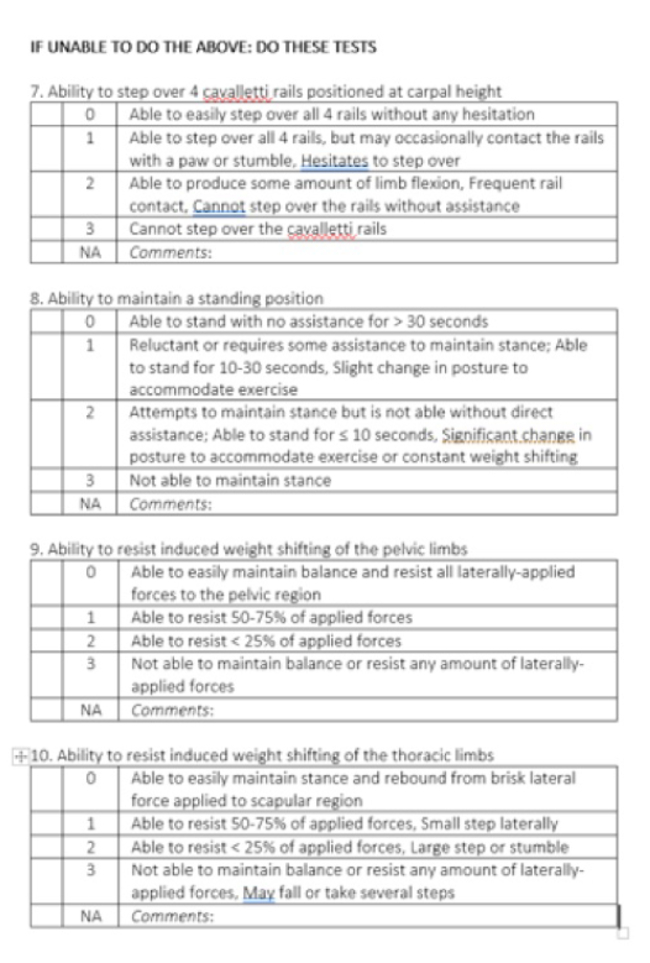Time: When evaluating a new patient, I generally schedule for a full hour. I get to know the pet through gentle contact while questioning the owner for history. Forms can help with this process - and can be given to the client to fill out ahead of time. However, I find that many variables come out during my questioning that are missed by the forms - many activities that cannot be accomplished for reasons that are more complex than simply pain (neurologic weakness, sarcopenia. obesity, cardiopulmonary compromise, etc.). Pet owners are a vital source of information in chronic pain, but often I need to “calibrate” them with repeated conversations.
Pain/QOL Assessment Tools
Canine Brief Pain Index (CBPI)
1. Pain severity (4 questions)
2. Pain interference with function (6 questions)
3. Quality of life (1 question)
Scores for each item are derived from a scale from 0–10 (no pain or does not interfere to extreme pain or completely interferes).
- Validated
- Scores are based upon owners’ assessment of pain and behaviors over past 7 days.
- Separate scores can be compared over time for pain severity, functional impairment and quality of life.
- Repeat at subsequent visits to assess response to analgesic therapy.
- Available to anyone to use in clinical setting at: www.vet.upenn.edu/research/clinical-trials/vcic/pennchart/cbpi-tool.
Cimino Brown D, Boston RC, Coyne JC, Farrar JT. 2007. Development and psychometric testing of an instrument designed to measure chronic pain in dogs with osteoarthritis. Am J Vet Res. 2007;68:631–637.
Helsinki Chronic Pain Index (HCPI)
1. A simple descriptive scale where 11 items are scored 0–4.
2. Owners are asked to assign a description to specific behaviors; no reference to presence or absence of pain is included.
- Also validated
- Simple descriptive modifiers require less analysis by pet owners regarding whether a pain is the cause of a behavior vs. something else (neuropathy, sarcopenia, cardiac disease).
- Does not suggest evaluating behaviors over a time- period: just in the moment.
Hielm-Bjorkman HK, Rita H, Tulamo R-M. Psychometric testing of the Helsinki chronic pain index by completion of a questionnaire in Finnish by owners of dogs with chronic signs of pain caused by osteoarthritis. Am J Vet Res. 2009;70:727–734.
Cincinnati Orthopedic Disability Index (CODI)
1. Owner-generated list of five activities that are impaired in their dog.
2. The owner then assigns a disability score (simple descriptive) to each activity.
3. Scores are not weighted for importance.
4. Common impairments that are followed include: Long walks, difficulty with slippery floors, getting in and out of the car, retrieving toys, playing with other animals, stiffness and pain with defecation.
- Also validated in dogs; more easily adapted to cats and other animals (not validated).
- Individual case-specific questionnaire for assessment of disability and chronic pain.
- Owners are involved in identifying specific behaviors with which their dog is having difficulty.
- This questionnaire allows owners and clinicians to follow progress (or lack thereof) related to activities deemed important to the dog, yet not typically evaluated on a standard orthopedic questionnaire.
- Could be used as a quality of life scale based upon case-specific behaviors/activities deemed important to the pet.
- Some activities may not respond much to analgesic treatments (slipping on floors).
Gingerich DA, Strobel JD. Use of client-specific outcome measures to assess treatment effects in geriatric, arthritic dogs: controlled clinical evaluation of a nutraceutical. Vet Ther. 2003;4:1:56–65.
Functional Assessment Example: CSU Outcome Measures (Pelvic Limb, Thoracic Limb, Neurologic):
1. In-clinic assessment of specific tasks
2. Score increases as the patient demonstrates ability
3. Evaluates specific functional qualities - overlap with pain but doesn’t differentiate
4. Labor intensive
5. Best when augmented by client evaluation as well (see prior section)
Gait analysis
1. Validated primarily in discrete forms of lameness (difficult to apply to multiple problems)
2. Gait changes can be pain, or functional deficits
3. Mats versus force plates versus kinesthesiology
Myofascial exam
1. Method
2. Common patterns to uncover
Neurological function and other concurrent conditions
| Canine Brief Pain Inventory | 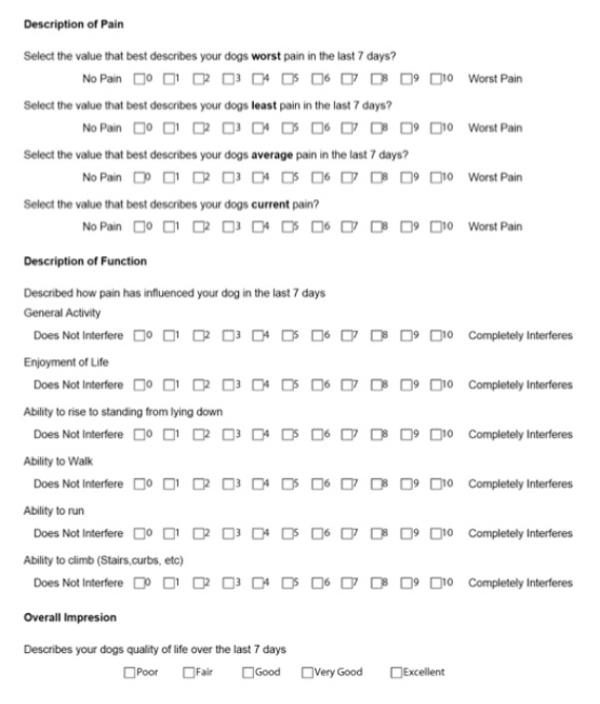
|
|
| |
| Helsinki Chronic Pain Index (HCPI) | 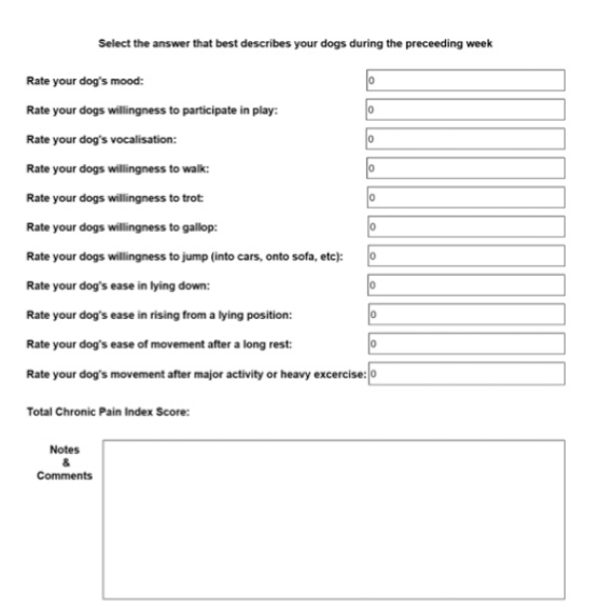
|
|
| |
| Cincinnati Orthopedic Disability Index (CODI) | 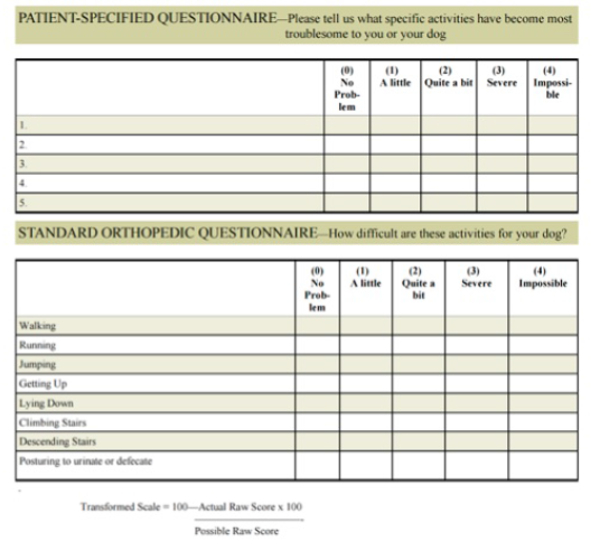
|
|
| |
